
-
Find the right food for your pet
Take this quiz to see which food may be the best for your furry friend.
Find the right food for your pet
Take this quiz to see which food may be the best for your furry friend.
Featured products
 Adult 7+ Perfect Digestion Chicken, Whole Oats & Brown Rice Recipe Dog Food
Adult 7+ Perfect Digestion Chicken, Whole Oats & Brown Rice Recipe Dog FoodScience Diet's breakthrough nutrition supports ultimate digestive well-being & healthy microbiome for dogs age 7+
Shop Now Adult 7+ No Corn, Wheat, Soy Chicken & Brown Rice Dog Food
Adult 7+ No Corn, Wheat, Soy Chicken & Brown Rice Dog FoodSupports energy level and beautiful coat in mature dogs
Shop Now Adult Perfect Weight & Joint Support Chicken Recipe Dry Dog Food
Adult Perfect Weight & Joint Support Chicken Recipe Dry Dog FoodThis weight management and mobility support dog food was created with Hill’s unique understanding of the biology of overweight dogs.
Shop NowFeatured products
 Adult Perfect Digestion Chicken, Barley & Whole Oats Recipe Cat Food
Adult Perfect Digestion Chicken, Barley & Whole Oats Recipe Cat FoodScience Diet's breakthrough nutrition supports ultimate digestive well-being & healthy microbiome
Shop Now Perfect Weight Salmon & Vegetable Canned Cat Food
Perfect Weight Salmon & Vegetable Canned Cat FoodOver 70% of cats lost weight within 10 weeks when fed this nutrition
Shop Now Adult Savory Chicken Entrée Cat Food
Adult Savory Chicken Entrée Cat FoodPrecisely balanced nutrition with the delicious taste of savory minced chicken to help fuel the energy needs of cats during the prime of their life
Shop Now -
Dog
- Dog Tips & Articles
-
Health Category
- Weight
- Food & Environmental Sensitivities
- Urinary
- Digestive
- Joint
- Kidney
-
Life Stage
- Puppy Nutrition
- Adult Nutrition
- Senior Nutrition
Cat
- Cat Tips & Articles
-
Health Category
- Weight
- Skin & Food Sensitivities
- Urinary
- Digestive
- Kidney
-
Life Stage
- Kitten Nutrition
- Adult Nutrition
Featured articles
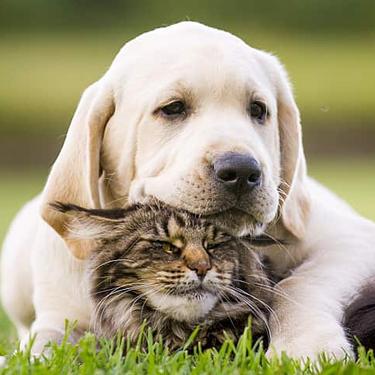 The Incredible Science Behind Your Pet's Microbiome
The Incredible Science Behind Your Pet's MicrobiomeLearn what a pet's microbiome is, how it contributes to your pet's gut & overall health, and why nutrition is important in maintaining healthy microbiomes.
Read More Pet Food Storage Tips
Pet Food Storage TipsDiscover how and where to store your dry, as well as canned, dog and cat food. Learn how to find the "best before" dates on all Hill's pet food packaging.
Read More Water
WaterDiscover why water is the most important nutrient for your dog or cat to live a healthy life. Find out how much water your pet should consume each day.
Read More -
Find the right food for your pet
Find the right food for your pet


As a pet parent, you want to keep your kitty clean and looking good, right?
Having the proper cat grooming tools on hand is essential to having a snazzy cat. Although cats are meticulous self-groomers and work hard to keep themselves clean, they need assistance from their humans to keep them in tip-top shape.
"Grooming is about more than just keeping your cat looking good," explains VetBabble. "Grooming your cat on a regular basis will also help you to keep an eye on its health. And grooming your cat can even help to minimize feline health issues such as digestive problems caused by hairballs." Additionally, regular brushing removes dirt, dead hair, and dander, all of which contribute to unhealthy skin, and it prevents your cat from getting matted hair that's unmanageable, at which point you'd need the assistance of a professional groomer. Brushing also helps remove the loose hair in a controlled environment that you can easily dispose of, rather than finding stuck to furniture, clothes and other wanted areas.
Because it's not a one-brush-suits-all situation, it can be tricky to know what you need and why. There are a lot of products from which to choose, so here's a handy guide to get you started on your quest for a well-groomed cat.
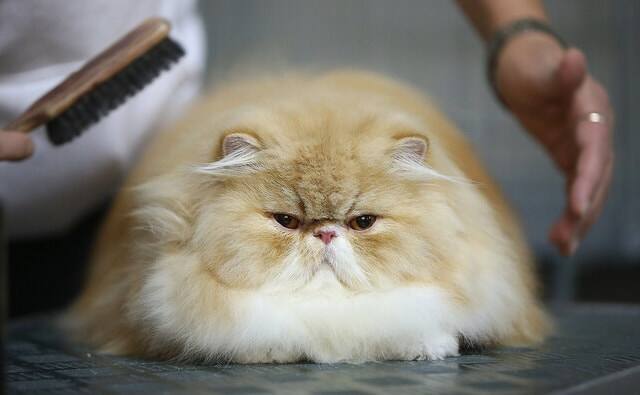
Brushes and Combs
All cats need to be brushed, even short-hairs, but not all cats like to be brushed. If you've ever been scratched while trying to groom your cat, you know this to be true.
Choosing the right tool for your furry friend's coat type is the first step to successful grooming and will go a long way to keeping you out of harm's way. Always brush or comb in the direction in which the hair grows.
For a short-hair cat, once a week use a fine-tooth comb to remove any debris, starting at her head and down through her tail. A metal comb works well, but, as with any grooming tool, use gentle strokes to avoid discomfort or injury. When you've finished combing, follow up with a soft-bristle cat brush to remove any loose hair.
Grooming a long-haired cat requires a little more maintenance, every one to three days, but the payoff of a healthy and well-groomed cat is worth the investment. Start with the legs and tummy, moving toward the head using a wide-tooth comb to work out the knots.
For thick, fluffy tails, Trupanion recommends you "part the tail down the middle and gently comb through the fur on each side. Any mats in the fur can often be separated by hand with the help of a little talcum powder; however, if you're struggling to untangle stubborn knots, try separating the fur using a mat-splitter." As with a short-hair cat, use a soft-bristle brush to remove excess fur.
Brushes are also a good way to get your cat's coat nice and soft. Because brushes don't pull at the hair as much as combs can, it is likely your cat will enjoy the experience a little more. In fact, some cats may respond favorably to this as it provides the same comfort and feeling as being petted.
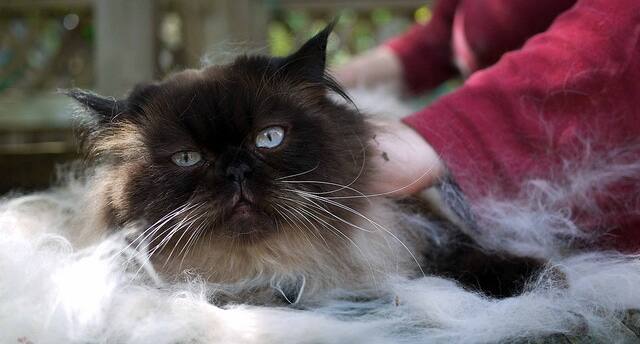


Tasty Tips
Other Cat Grooming Care
In addition to taking care of her coat, other routine maintenance for your cat includes brushing her teeth, trimming her claws and giving her a bath (yes, it's possible). As with coat-combing, it's important to start slow and work at a pace that's comfortable for you and your cat.
Grooming your cat won't break the bank, either. Many pet parents have great success with combs, brushes, and toothbrushes found in the (human) baby aisle. Bonus: these gentle, safe tools can be less expensive than those specifically marketed as cat grooming tools.
It's best to accustom your cat to a grooming routine when she's a kitten, but it's never too late to start with cats of all ages. Begin gradually, just a few minutes at a time, until your fur baby is comfortable with the tools. With time and patience, you'll have a well-groomed cat, and the process will become a relaxing and enjoyable bonding experience for the two of you.


Christine O'Brien is a writer, mom, and long-time cat parent whose two Russian Blues rule the house. Her work also appears in Care.com, What to Expect, and Fit Pregnancy, where she writes about pets, pregnancy, and family life. Find and follow her on Instagram and Twitter @brovelliobrien.
Related products

Feline Adult Perfect Weight Variety Pack

Science Diet's breakthrough nutrition supports ultimate digestive well-being & healthy microbiome

Precisely balanced nutrition with the delicious taste of savory minced chicken to help fuel the energy needs of cats during the prime of their life

Over 70% of cats lost weight within 10 weeks when fed this nutrition
Related articles
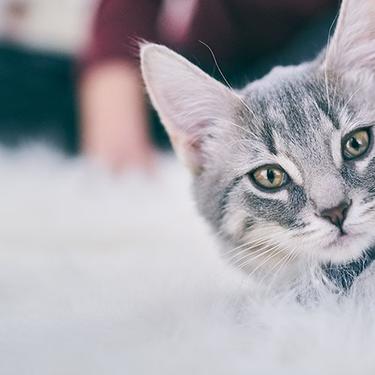
Discover the benefits of Hill's line of kitten foods and how they provide complete and balance nutrition for growing kittens.
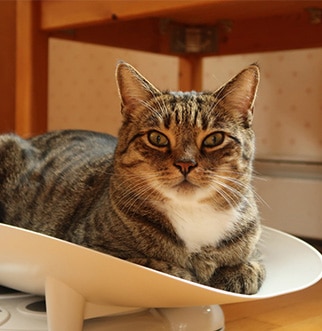
How do you get a cat to lose weight? Learn all about cat foods for weight loss, including how to choose weight control cat food and exercise tips.

Discover how to identify cat sensitive skin and what you can do to help your cat thrive from head to paw.
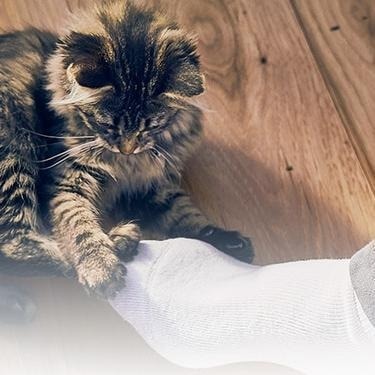
Discover which cat toys games your feline friend might like, and how they are great sources of exercise. Explore our library of articles to learn more.

Put your cat on a diet without them knowing
Our low calorie formula helps you control your cat's weight. It's packed with high-quality protein for building lean muscles, and made with purposeful ingredients for a flavorful, nutritious meal. Clinically proven antioxidants, Vitamin C+E, help promote a healthy immune system.
Put your cat on a diet without them knowing
Our low calorie formula helps you control your cat's weight. It's packed with high-quality protein for building lean muscles, and made with purposeful ingredients for a flavorful, nutritious meal. Clinically proven antioxidants, Vitamin C+E, help promote a healthy immune system.

